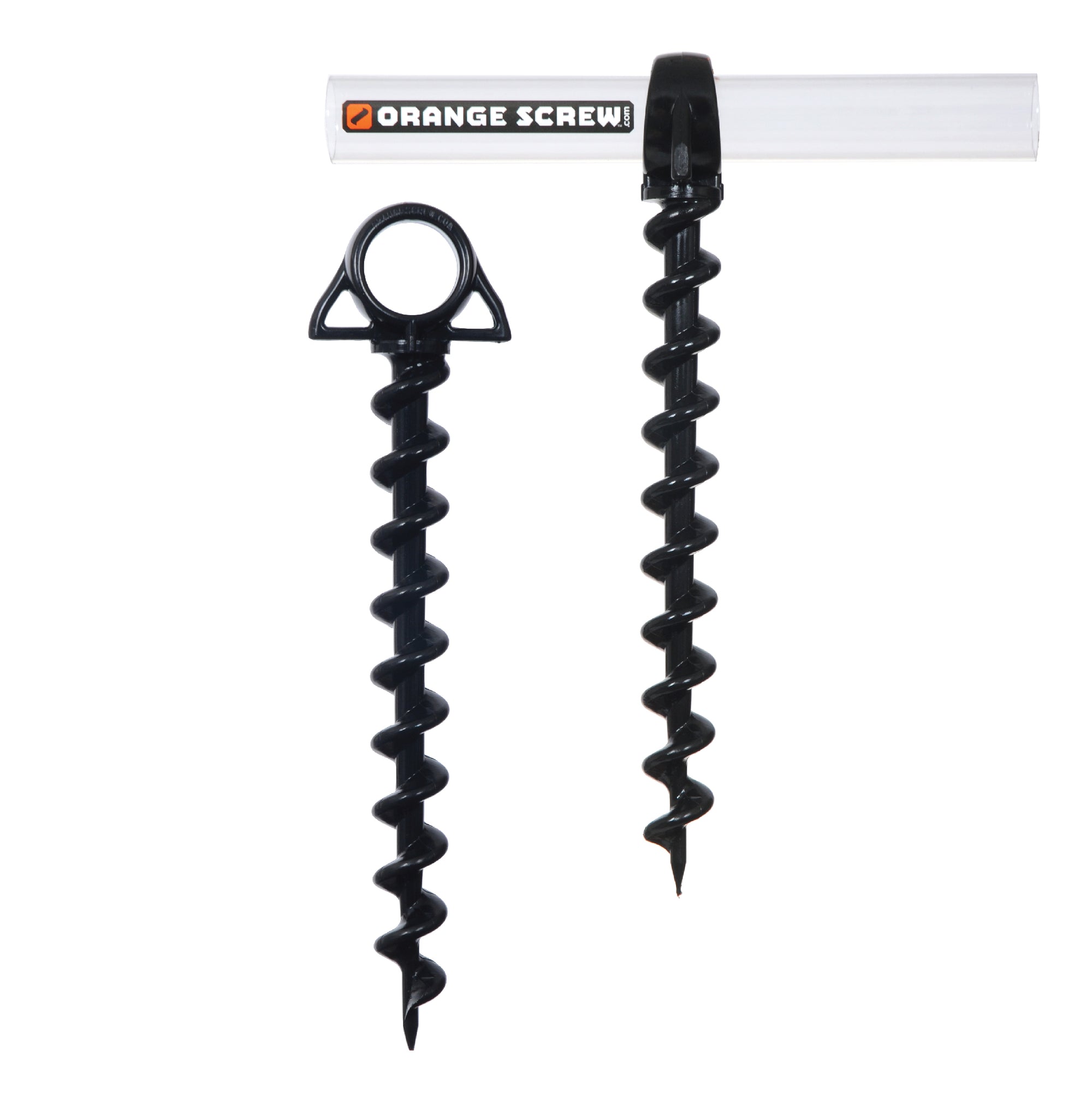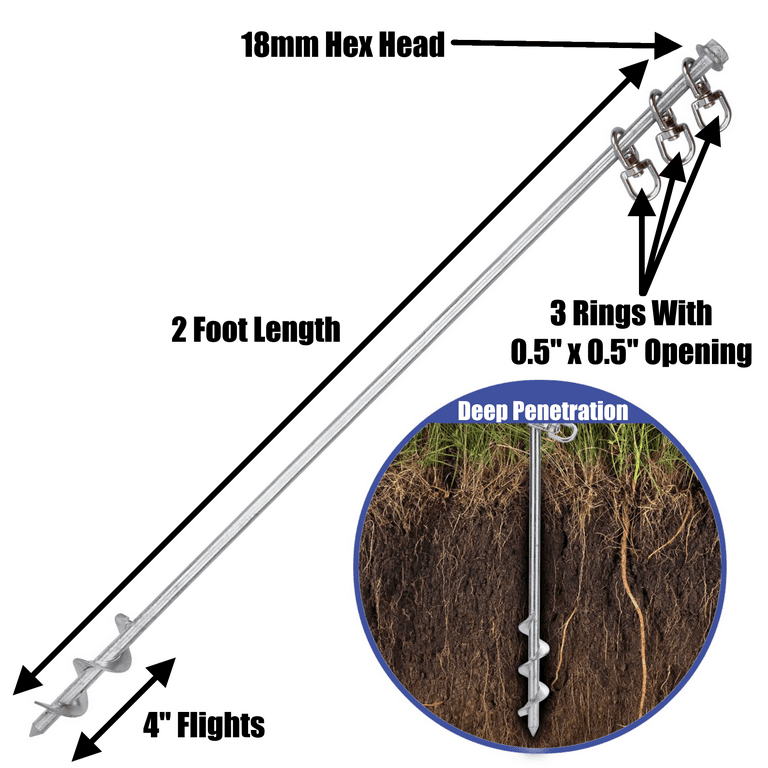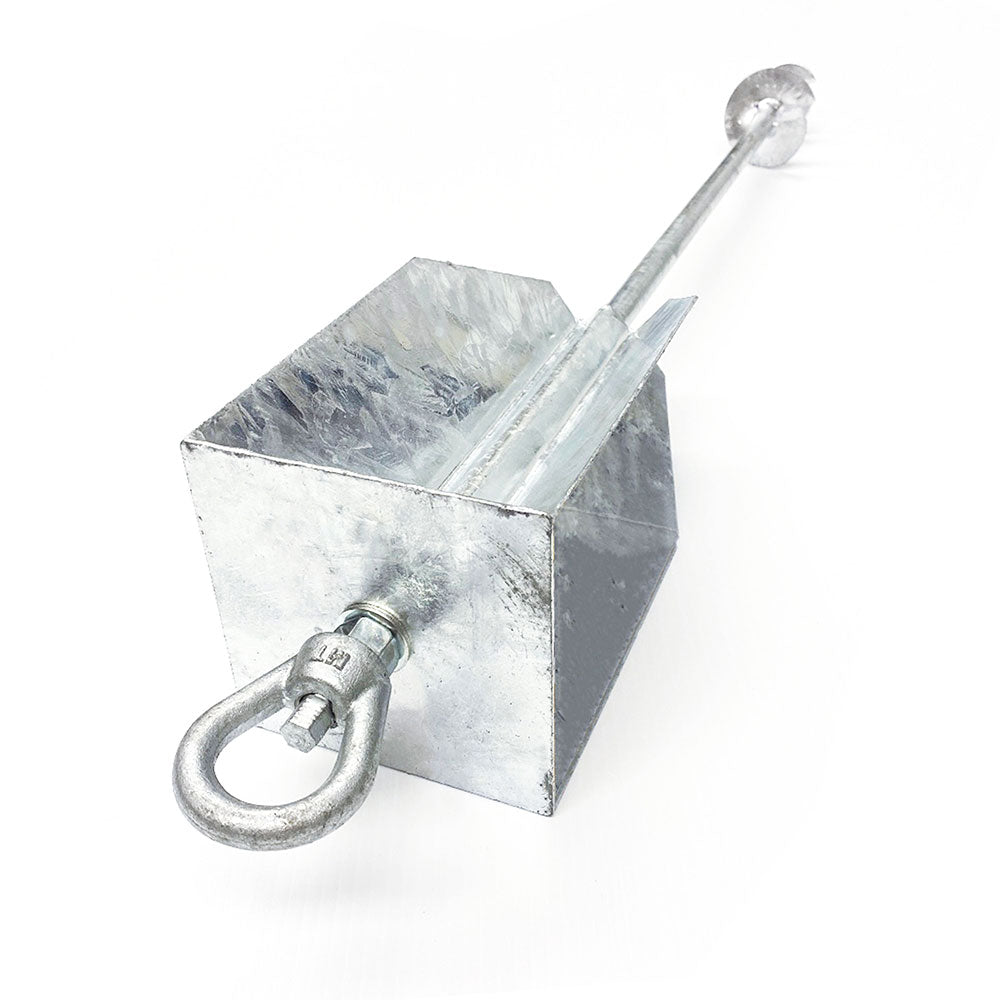Frequent Errors When Using a Ground Anchor for Security
Frequent Errors When Using a Ground Anchor for Security
Blog Article
Discover the Essential Uses Ground Anchor in Building and Landscape Design
Ground supports are essential parts in both building and landscaping, giving crucial security and assistance across different applications. Their role in securing heavy tools and boosting soil retention highlights their importance in promoting security and sustainability.
Safeguarding Fencings and Gates
Safeguarding fencings and entrances is a fundamental element of residential or commercial property delineation and security in both residential and commercial atmospheres. Ground supports play an important duty in guaranteeing that these frameworks stay secure and efficient in time. By supplying a robust anchoring option, ground anchors assist protect against fencings from leaning or falling down because of ecological factors such as wind, soil disintegration, or ground activity.
In domestic setups, properly anchored fencings not only boost the visual allure of a home however likewise give security and safety for animals and families. Similarly, in commercial settings, protected fence is vital for securing properties, delineating building borders, and making sure the safety of employees and customers. Ground anchors can be set up in numerous dirt kinds and problems, making them versatile for various projects.
In addition, using ground supports permits for a much more irreversible option compared to typical techniques, such as concrete grounds, which can be lengthy and labor-intensive. Ground Anchor. This efficiency is specifically important in landscaping tasks where timelines are essential. Overall, the integration of ground anchors right into fencing and entrance installations substantially contributes to their long life, functionality, and total effectiveness in protecting buildings
Stabilizing Temporary Structures
While short-lived structures are commonly created for short-term use, their security is critical for guaranteeing safety and performance during their functional period. Ground supports work as a reliable service for supporting these structures, which may consist of tents, stages, or modular buildings. By anchoring these installments safely to the ground, ground anchors help stand up to wind uplift and lateral forces that might jeopardize the stability of the framework.

In addition, the use of ground supports permits for simple removal and repositioning of momentary frameworks, making them a perfect choice for building sites or occasions that call for versatility. On the whole, ground anchors are a crucial device in the safe and reliable administration of momentary frameworks, ensuring they perform dependably throughout their intended usage.
Supporting Maintaining Walls
Utilizing ground supports substantially enhances the structural integrity of preserving walls, which are vital for managing soil disintegration and preserving landscape security. Keeping wall surfaces are subjected to side earth pressures, and without adequate assistance, they can fall short, resulting in costly find repairs and potential damages to surrounding frameworks. Ground anchors provide a dependable solution by transferring the load from the wall surface right into the underlying soil or rock, making sure the wall surface continues to be upright and safe.
These supports are typically set up at a fixed angle and deepness, permitting them to stand up to the pressures applied by the kept dirt. By utilizing high-tensile stamina materials and proper installation methods, ground anchors can considerably boost the wall surface's performance under different ecological problems, consisting of heavy rainfall and seismic activity.
Additionally, the use of ground anchors can decrease the requirement for comprehensive excavation and material use, advertising more lasting building and construction practices. This approach not only enhances the longevity of retaining wall surfaces but also decreases the overall footprint of landscape design jobs. Integrating ground anchors in retaining wall surface layout is an important technique for both building professionals and landscape engineers aiming to ensure long-term stability and security.
Anchoring Heavy Equipment

Ground anchors supply a trustworthy method to secure tools, distributing forces evenly and reinforcing stability. The usage of anchors Visit Website permits operators to work with confidence, especially when raising or moving hefty loads. In addition, in situations where equipment should be placed on soft or unstable soil, ground supports can be installed to enhance grip and prevent tools from coming to be or sinking paralyzed.
Executing an organized technique to securing hefty tools not just improves operational effectiveness however likewise maintains safety requirements on website. Normal evaluations and upkeep of securing systems are vital to guarantee their proceeded effectiveness. By focusing on the anchoring of hefty devices, construction and landscaping specialists can produce much safer job environments, ultimately resulting in even more effective project outcomes.
Enhancing Dirt Retention

Dirt disintegration presents a considerable challenge in both building and landscape design jobs, making efficient dirt retention techniques vital. Ground supports play an important duty in improving soil retention by giving stability to structures and vegetation, thus preventing soil variation triggered by water drainage and wind.
The installment of ground supports includes embedding steel poles or cables deep into the soil, which are after that safeguarded to keeping walls, terracing systems, or plants. This anchoring mechanism not only supports the dirt yet also enhances the overall stability of landscape design features. As an example, in sloped locations, ground supports can be made use of to support preserving wall surfaces, efficiently minimizing the danger of landslides see page and soil erosion.
Furthermore, these supports aid in the facility of ingrained plants, which even more strengthen the dirt structure. By encouraging origin development, ground anchors contribute to a robust environment that normally holds soil in location, reducing the demand for man-made barriers or constant maintenance.
Final Thought
To conclude, ground anchors serve numerous crucial features in building and landscaping. Their application in safeguarding gateways and fencings, stabilizing temporary structures, supporting maintaining walls, anchoring hefty devices, and enhancing dirt retention highlights their relevance in promoting security and stability. By promoting these crucial tasks, ground anchors contribute significantly to the general honesty of various projects, ensuring resilience and sustainability in both property and business settings. Their versatility makes them an important device in modern-day construction methods.
By supplying a robust anchoring solution, ground anchors aid avoid fences from leaning or breaking down due to environmental elements such as wind, dirt disintegration, or ground activity. - Ground Anchor
By securing these installments firmly to the ground, ground supports help resist wind uplift and side forces that can compromise the stability of the framework.
Using ground supports significantly boosts the architectural integrity of retaining walls, which are important for managing soil disintegration and maintaining landscape stability. Ground anchors give a reputable remedy by transferring the load from the wall surface into the underlying dirt or rock, making certain the wall surface stays upright and safe.

Report this page